Introducing the New Holland Honey Eater, a unique avian species predominantly characterized by its contrasting black and white feathers. However, when in motion, this bird exhibits stunning bursts of yellow hues that are sure to catch your eye.
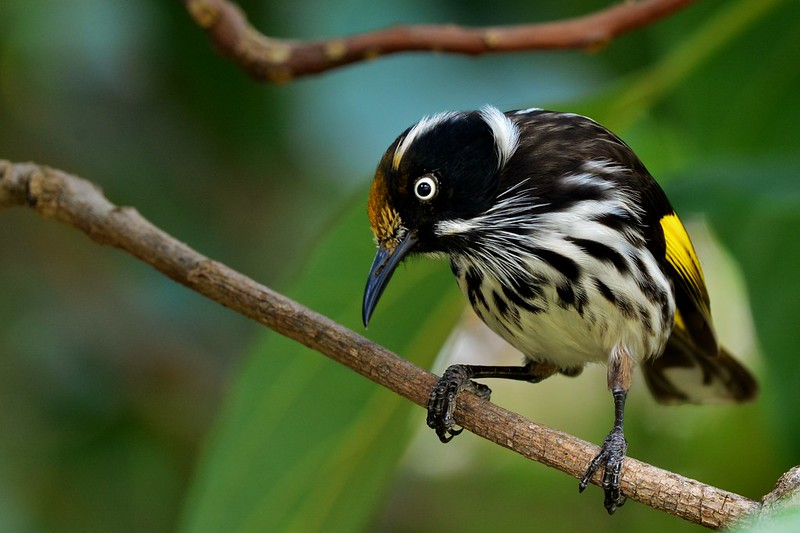
The New Holland honeyeater (Phylidonyris novaehollandiae) is a type of honeyeater that can be spotted across southern Australia. It has striking features, including a predominantly black and white body with a notable yellow wing patch, white facial tufts, and a corresponding white iris. Additionally, it also boasts a small white ear patch and yellow edges in the tail. The photo credit goes to Laurie Boyle under the CC BY-SA 2.0 license.
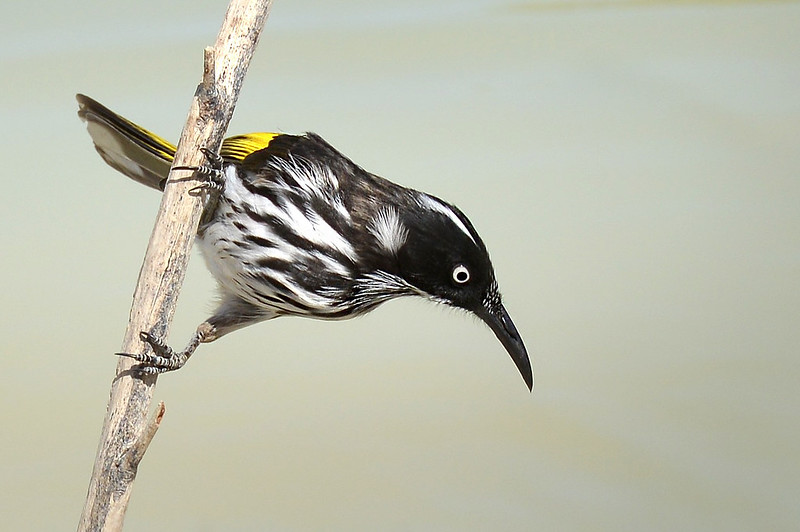
The New Holland Honeyeater is a bird that is always on the move, making it difficult to capture in photos. Both male and female birds look alike, but the female is a bit smaller. Younger birds have brown feathers and grey eyes instead of white. Photo credit goes to Jean and Fred Hort under CC BY 2.0.
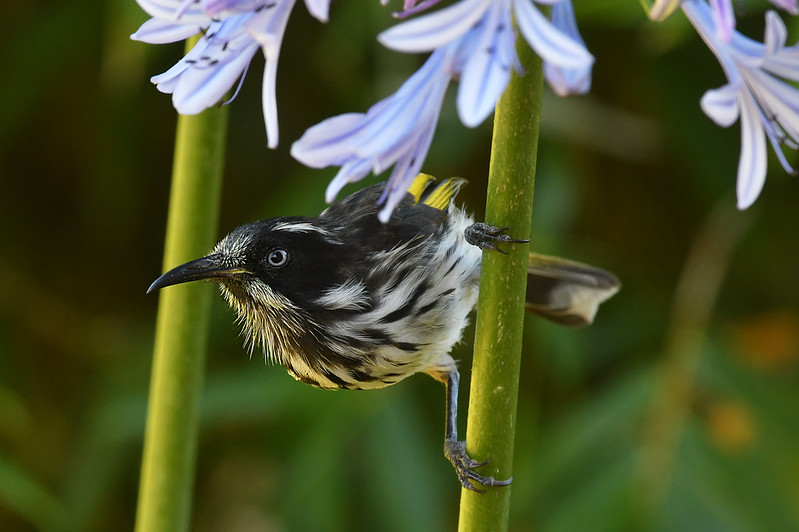
The image credit goes to Jean and Fred Hort, who captured a picture of this particular type of species. It is commonly found in the southern region of Australia, including Tasmania, Queensland, and Brisbane, going all the way up to just north of Perth in Western Australia.
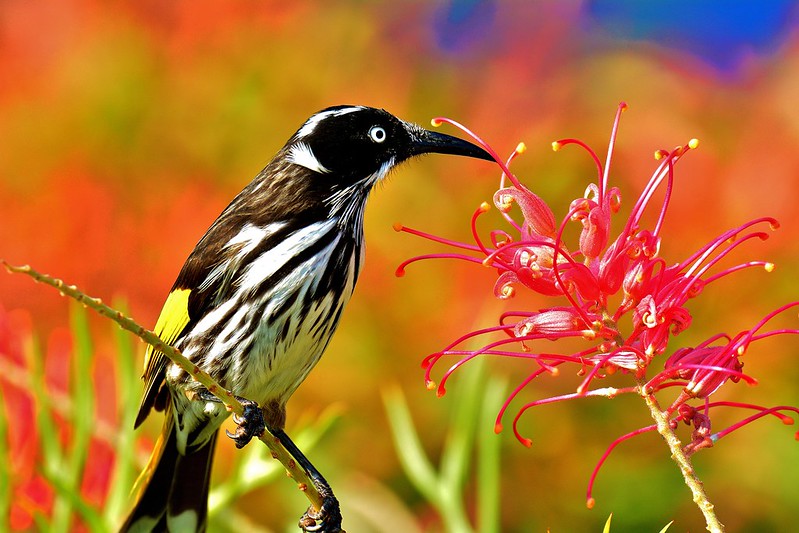
The image provided by Laurie Boyle shows some birds that are commonly spotted in areas with dry shrubs. However, it is not uncommon to find them in dry savannas, forests, grasslands, plantations, and gardens as well, especially if there are Grevillea and Banksia plants around.
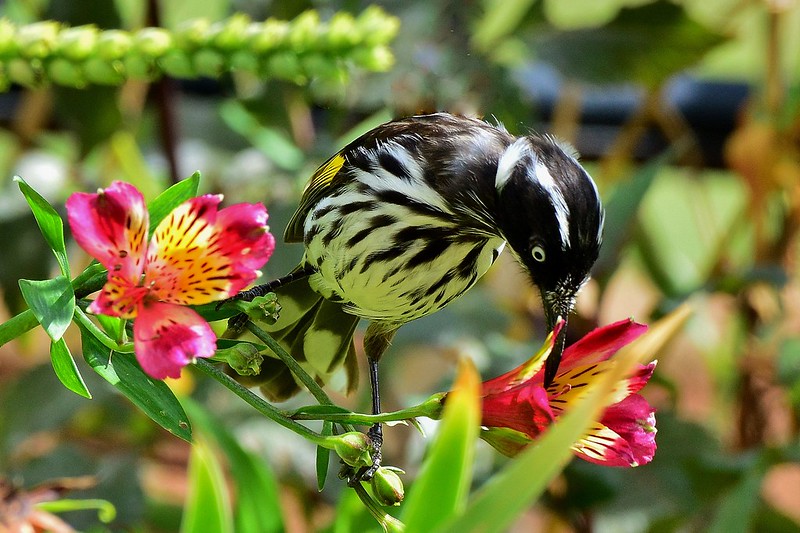
The New Holland Honeyeaters are known for their active feeding habits, as they dart from one flower to another in search of sweet nectar. They primarily rely on this high-energy food source, but also feed on fruits, insects, and spiders. A beautiful photo of these birds was captured and is shared here with the kind permission of Laurie Boyle under the CC BY-SA 2.0 license.
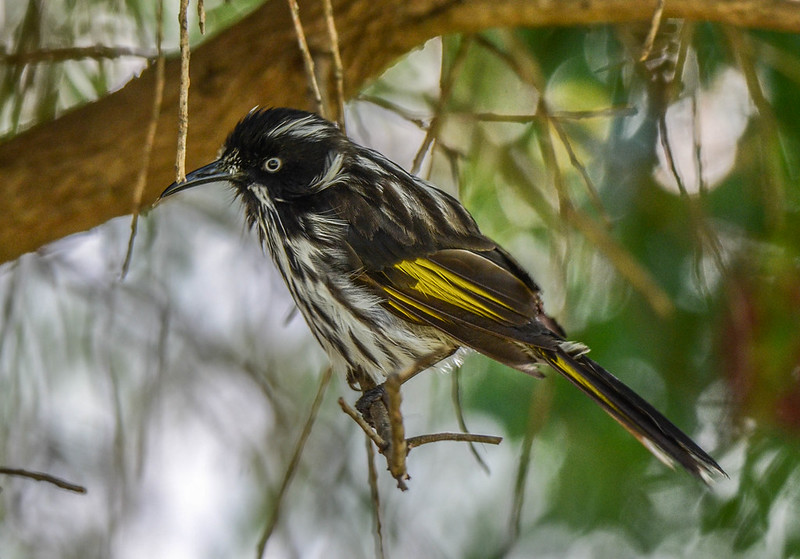
The New Holland Honeyeater constructs its nest in a unique and interesting way. The cup-shaped structure is situated about 6 meters high and is primarily composed of bark and grasses held together with spider web. Soft materials line the interior, wherein one to three pinkish eggs are deposited. It usually takes around 14 days for the eggs to hatch, and both parents share in feeding the chicks. These birds can breed up to two or three times each year, which allows them to raise multiple broods. The photo featured above was taken by peterichman under CC BY 2.0 license.
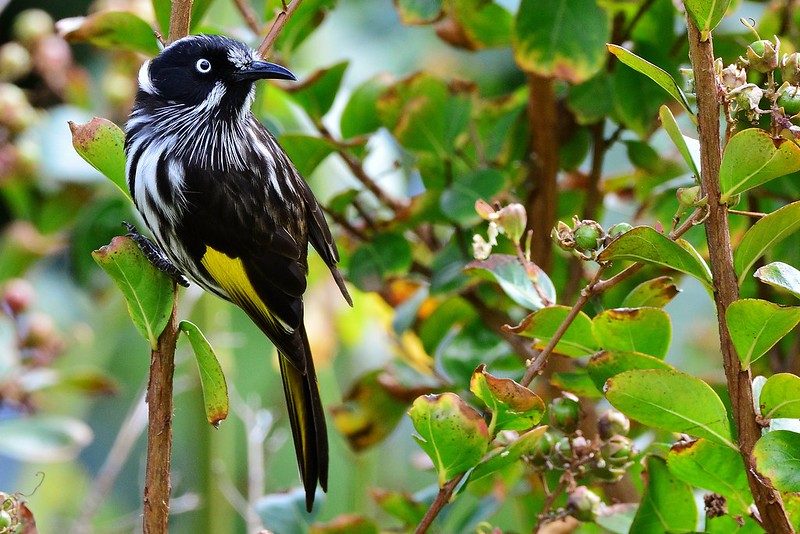
According to Laurie Boyle’s photograph, the New Holland honeyeater is a prevalent species that thrives in habitats with similar characteristics. Experts believe that their population is currently stable and not at risk of significant decline or threats.
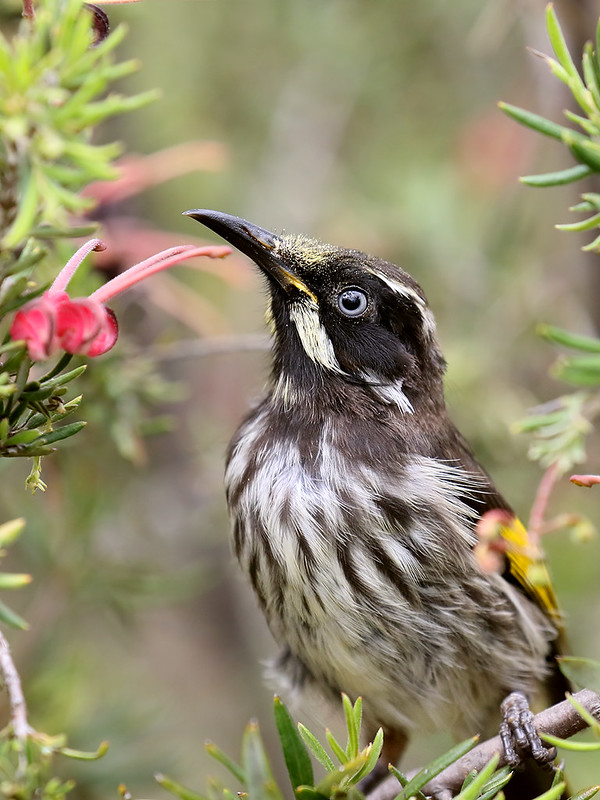
Check out the lovely bird in the video below and listen to its sweet melody:
